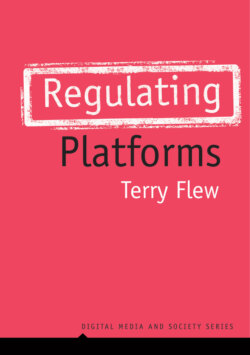Читать книгу Regulating Platforms - Terry Flew - Страница 28
Notes
Оглавление1 1 One important countervailing force is the extent to which digital platform giants compete with one another. For example, Microsoft’s Bing is potentially a search engine alternative to Google, while Apple’s concerns for the security of its users’ data can be seen as a corporate strategy designed to expose the data-driven business model of Facebook rather than as a demonstration of corporate altruism (Economist, 2021). This competition between tech giants is not competition in the classical sense, but more in the sense in which Joseph Schumpeter took it to occur in advanced capitalism in the absence of new entrepreneurs (Schumpeter, 1950).
2 2 Two further points can be made here. The first is that so-called mass media such as television take less and less of a ‘mass’ form. With the rise of video on demand and with the availability of content in the form of a catalogue ready for consumption any time (rather than tied to a specific schedule), television services increasingly resemble digital platforms. Second, much of the content of digital platforms comes from the largest traditional media providers. In their study of online news consumption during the 2019 general election in the United Kingdom, Fletcher, Newman, and Schulz found that online news was a winner-takes-most market: BBC News and the Daily Mail Online accounted for nearly half (48%) the time spent on news, and the top five sites, including the Guardian, the Sun, and the Mirror, accounted for two thirds (66%) of the time spent on online news sites. Alternative news sites accounted for less than 1% (Fletcher et al., 2020).
3 3 Lewis et al. (2018) observed that populist parties accounted for about 25% of votes in elections in European states in the mid-2010s, as compared to about 5–7% in the 1990s. Given that there are conceptual difficulties with defining a ‘populist party’, an alternative indicator is the declining vote of the traditional parties of the centre-right and centre-left. In the 2019 European parliamentary elections, the three leading traditional blocs (conservatives, liberals, and socialists or social democrats) received 52.5% of all votes, to hold 55.2% of seats. As recently as 2009, these three blocs accounted for 72.4% of votes and 75.6% of seats.
